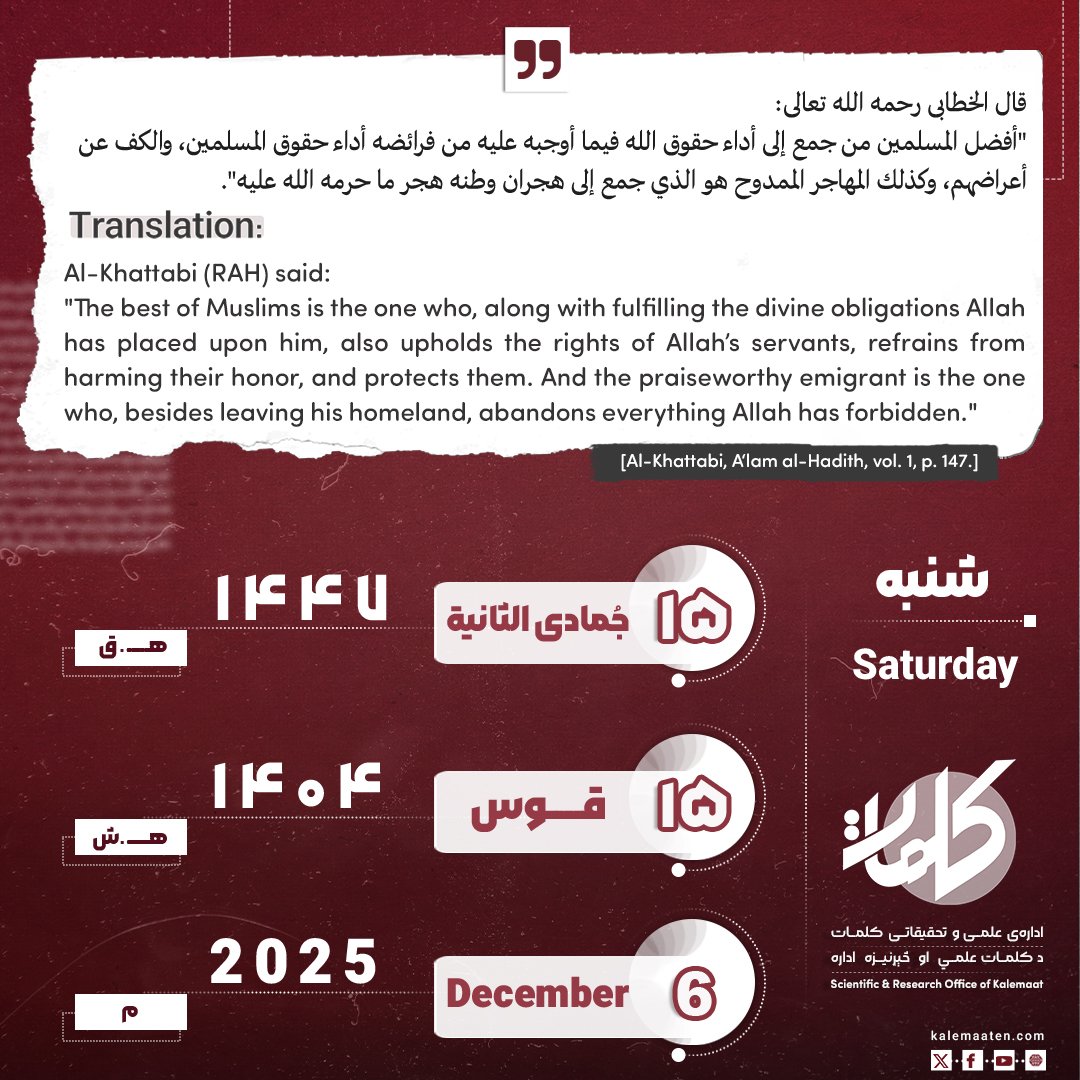Author: Shukran Ahmadi
An Overview of the Characteristics of Ahl al-Sunnah wa-al Jama’ah (The 10th and Final Part)
Hazrat Mahdi
A summary of the beliefs about Hazrat Mahdi based on Ahl al-Sunnah wa-al Jama’ah sources is as follows: Hazrat Mahdi will be born before the end of the world and his name will be Muhammad or Ahmad, the son of Abdullah. He is a descendant of the Holy Prophet Muhammad (may Allah bless him and grant him peace) and one of the children of Hazrat Fatima (may Allah bless her and grant him peace). His morals and behavior will resemble that of the Prophet (peace be upon him), although he will not necessarily look like him. He is described as having a prominent forehead and a long nose. After his emergence, he will fill the earth, which is currently filled with oppression, with justice and generosity. He will revive Islamic law and restore the forgotten Sunnah of the Prophet (peace be upon him).
During the era of Hazrat Mahdi, Islam will reach its zenith and spread across the globe. The religion will be advanced with strength and confidence, and public comfort and welfare will flourish due to the widespread justice. Wealth will be increased and distributed fairly, without hoarding. Hazrat Mahdi is said to live for seven years, after which the Dajjal (Antichrist) will appear, followed by the descent of Jesus (peace be upon him), who will help Hazrat Mahdi in defeating Dajjal. Following these events, Hazrat Mahdi will pass away, and Muslims will pray for him.
This overview encompasses part of the beliefs of Ahl al-Sunnah wa-al Jama’ah, as detailed in their religious texts. Ultimately, we ask Allah Almighty to guide everyone to the truth and the straight path.
References
1. Ibn Abi Shaiba, al-Musnaf fi al-Ahadith wa Al-Athar, Dar al-Fikr, 1409 AH (1989).
2. Abu al-Qasim Hibatullah bin al-Hasan bin Mansur al-Lalkai (418 AH), Description of the Principles of Belief of Ahl al-Sunnah wal Jama’ah, Dar Tayyaba-Riyadh, 1409 AH.
3. Abu Jafar al-Waraq al-Tahawi, Al-Aqeedah al-Tahawi, Est.
4. Ahmad bin Hanbal, Musnad of Ahmad bin Hanbal, Darahiya al-Tarath al-Arabi, 1414 AH (1993).
5. Esfraini, Abdul Qahir, al-Farq bin al-Feraq, Dar al-Marefa, researched by Mohammad Mohyeddin Abdulhamid.
6. Al-Ash’ari, Abul Hasan Ali bin Ismail, Al-Ibanah on the Principles of Religion, Dar al-Kutub Al-Elamiya, 1418 AH (1998).
7. Al-Bukhari, Muhammad bin Ismail bin Ibrahim bin Al-Mughira, Sahih Al-Bukhari, Dar al-Nashar and Distribution.
8. Al-Tirmidhi, Abu Issa Muhammad bin Isa bin Sawra, Sunan al-Tirmidhi, Dar al-Fikr, Beirut, Lebanon, 2nd edition.
9. Jalandhari, Khair Mohammad, Khair al-Fattawi, Multan Relief School, 1407 AH (1987).
10. Encyclopaedia of Shiism, published by Shahid Saeed Mojtabi, Tehran, 1375.
11. Saadi, Dr. Abdul Malik, Description of Sunni Beliefs, translated by Amir Sadiq Tabrizi, Kurdistan Publications, 1379 AH.
12. Siyuti, Jalaluddin, History of the Caliphs, Al-Saada Press, Egypt, 1st edition, 1952 (1371 AH).
13. Osmani, Muhammad Taqi, Hazrat Muawiyah and Historical Facts, translated by Maulana Muhammad, Darul Uloom Library, Karachi, 1413 AH.
14. Al-Qashiri, Al-Nisaburi Muslim bin Al-Hajjaj Abu al-Hassan, Sahih al-Muslim, Dar al-Katb al-Al-Almiya, Beirut, Lebanon.
15. Nadavi, Seyyed Suleiman, Ahl al-Sunnah wal Jama’ah, Islamic Publications Council.



